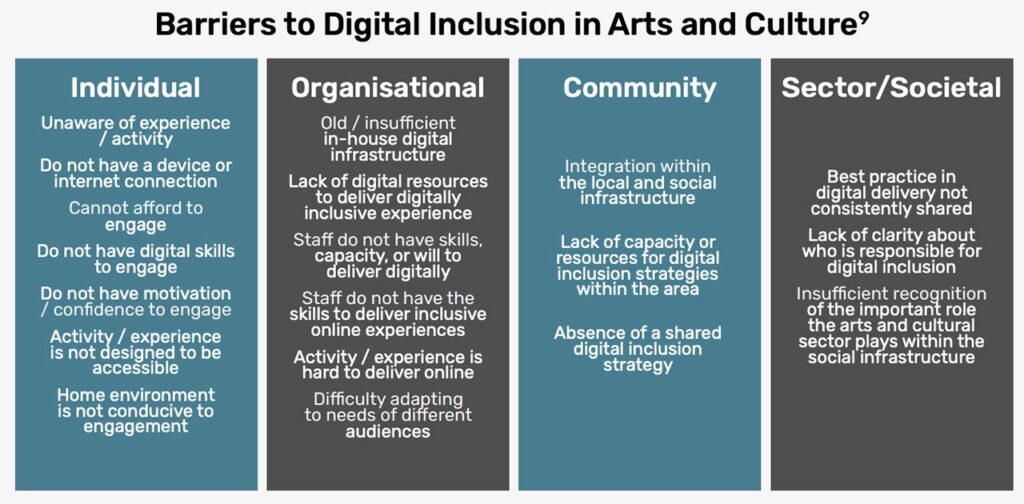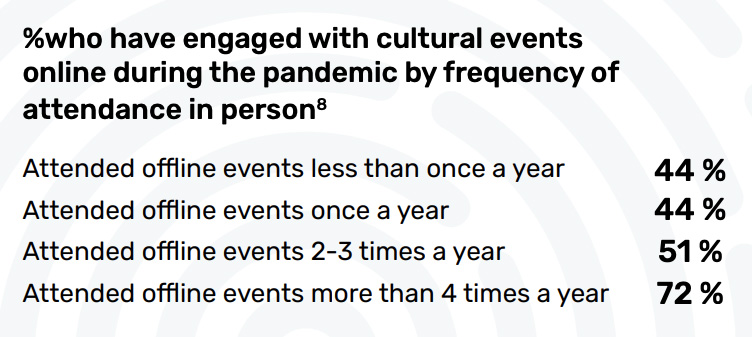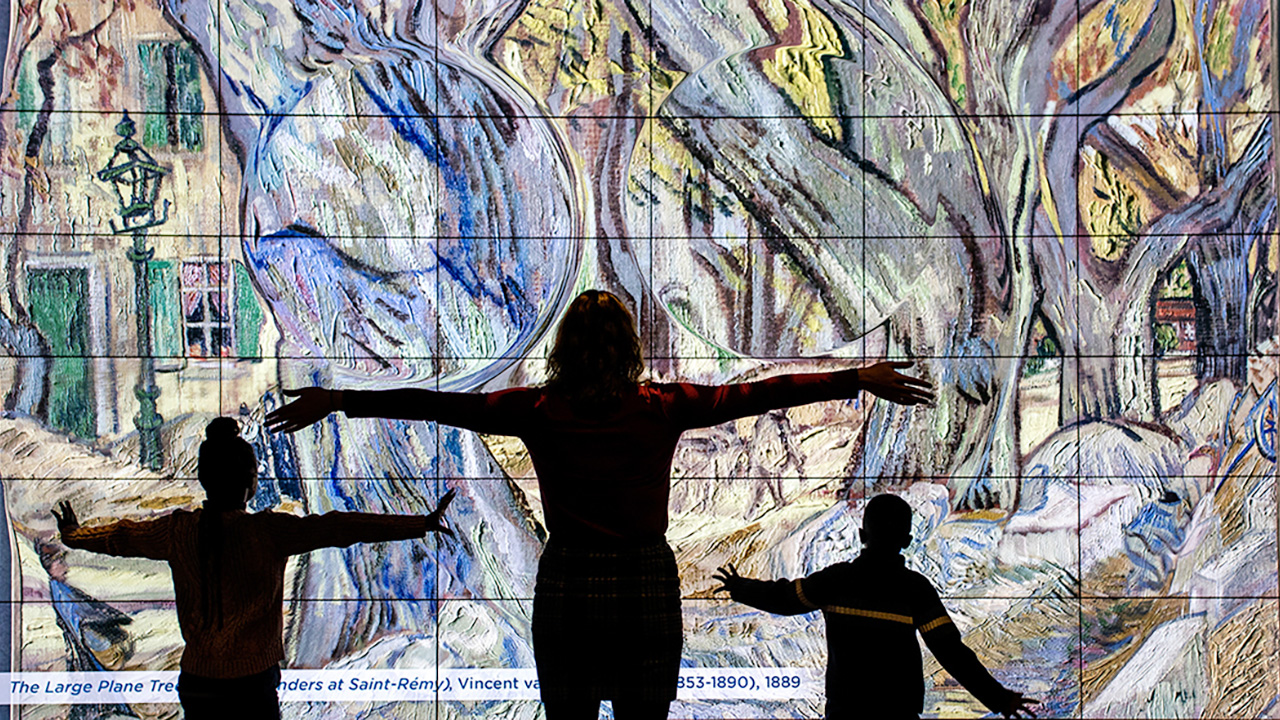Although a digital divide existed before the pandemic — separating those with digital access and literacy from those without — the past year’s crisis underscored such socioeconomically-dependent disparities and cultural organizations’ frustrations in matching pace with digital needs. Audiences who were already comfortable maneuvering the cyberspace for enriching activities were able to take advantage of online offerings, whereas individuals with weaker digital skills were not catered to.
However, digital inclusion and exclusion exist along a spectrum, complicating organizations’ attempts to resolve a divide that will only continue to grow as organizations look increasingly to preserving digital offerings in the long term.

Barriers to digital participation range from a lack of digital confidence to financial vulnerability. Image: Good Things Foundation
To target this concerning trend, on August 17, the Good Things Foundation, in collaboration with the Arts Council England and Common Vision, released Digital Inclusion and Exclusion in the Arts and Cultural Sector to guide organizations in making online offerings more inclusive for the public. In particular, the report takes a close look at how the sector can harness the potential of digital without increasing the digital gap. For the 2.6 million individuals offline and the 1.5 million lacking internet access in the UK, with well-informed redevelopment, arts and cultural organizations can position themselves as meaningful cantilevers to transform the digitally excluded into members of the digitally included.
Here are four key strategies from the report.
Developing online offerings with digital inclusion in mind

A September 2020 Audience Agency survey found that individuals who participated in offline cultural events were more likely to engage digitally. Image: Good Things Foundation
Referencing a study by the Audience Agency, the report noted the correlation between the frequency of offline arts and culture participation and levels of digital engagement; of the people who attended more than four in-person activities per year, 72 percent were more likely to engage online during the pandemic. To encourage online participation, cultural programs need to be accessible across the spectrum of digital abilities and confidence.
While designing their initiatives or experiences, organizations should consider how they can reach individuals lacking suitable devices or a reliable internet connection, who are financially vulnerable, or with lower levels of digital literacy. Targeting and promoting on offline channels and social platforms that have ubiquitous usage ensure inclusive content delivery. By taking into account its audience’s resources and support needed, a cultural venue can offer an inviting, non-threatening, and positive experience that will contribute to its online visitors’ digital confidence.
Building local partnerships to resolve barriers to digital engagement

The Open Clasp Theatre Company’s digital-first production of Rattle Snake — centered on coercive domestic abuse — was designed with inclusivity in mind and in consultation with local community organizations to ensure a wide audience could access the screening in a safe way. Image: Open Clasp Theatre Company
The report discovered that lack of access to promotional channels, such as social media platforms, precludes awareness of available digital experiences and activities. Additionally, there are geographic and demographic differences in the degree of digital exclusion or inclusion, with digital exclusion highest in northeast UK and among older, rural populations.
As a first step in targeting these barriers to participation, organizations should communicate with their local communities to understand what is preventing audiences from engaging with online content. Partnerships with community organizations, such as support groups for audiences needing encouragement to test out digital platforms and libraries, which can provide practical support through access to digital connection and devices, will also assist organizations in resolving these barriers.
Upskilling staff and accessing outside funding streams
Beyond community barriers, organizations need to identify and address internal barriers to digital delivery and strategize a feasible ratio of face-to-face to digital delivery accordingly. As a benchmark, the Arts Council England’s Digital Culture Compass can be consulted to identify areas in need of improvement and develop a plan, which may entail upskilling under-experienced staff or volunteers, and seeking funding from outside the sector to support the creation of digitally inclusive experiences.
Another immediate issue with developing digital delivery is a lack of funding or understanding from donors about the costs of online programs, which could involve creating platforms to assist participants with disabilities or distributing devices throughout a community. Local partnerships can reduce individual organizational investment; this can be achieved with strategies such as working with libraries to access their digital reserves and free-to-the-public devices, and with local authorities who understand the needs of the community.
Sharing learnings between peers and across the sector
The same spectrum of digital confidence seen in audiences also exists within the arts and cultural sector. Consequently, before they can seek ways to improve their offerings, inexperienced organizations need support to understand what constitutes a digitally inclusive experience, what resources are required, and where their responsibilities lie in promoting community digital inclusion.
This knowledge and support can be supplied by more digitally advanced organizations sharing their learnings on channels such as the Arts Council England’s Digital Culture Network, and partnering with digital inclusion experts who can assist in formulating well-informed strategies. Forefronting digital inclusion practices won’t just make organizations more conscious of digital gaps, but motivate them to address these concerns to broaden their reach and ultimately, benefit their communities and the sector.



